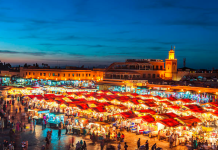Regenerative tourism focuses on prioritising the community’s needs rather than the traveller’s. Photo / Getty Images
It was mid-pandemic when the phrase started appearing in headlines.
“Move over, sustainable travel. Regenerative travel has arrived,” declared the New York Times in August 2020. Even New Zealand’s Ministry of Business Innovation and Employment has jumped on the bandwagon, expressing its intentions to shift to a regenerative tourism model.
But what exactly is regenerative tourism—and how does it differ from sustainable, ethical, or responsible tourism?
/cloudfront-ap-southeast-2.images.arcpublishing.com/nzme/NJAHQIZTDVE25MTECO5MXXC73Q.jpg)
I’ll admit that I scoffed at the notion that “regenerative” tourism was anything new. As far as I was concerned, it was just another buzzword made for marketing purposes. It also didn’t help that it was continually being defined as “leaving a place better than you found it,” with most of the examples being voluntourism programmes.
As someone who has been writing about sustainable tourism for more than a decade, it was a definition that left me deeply uncomfortable. As I’ve written about previously, voluntourism is another industry plagued with problems, including perpetuating neo-colonialism. So, I decided to call the experts to figure out what exactly I was missing.
/cloudfront-ap-southeast-2.images.arcpublishing.com/nzme/NVG5EA3ETZHVTPUDMGQKVCW7UY.jpg)
And, as it turns out, even the experts are unclear on what exactly regenerative tourism looks like in practice.
“People are still struggling to figure out what it means, including us,” says Debbie Clark, co-host of the acclaimed Good Awaits podcast, which is dedicated to regenerative tourism in Aotearoa. Along with Josie Major, she introduces listeners to thought leaders in the space.
But Clarke and Major say one thing is clear—regenerative tourism isn’t the same as sustainable tourism. It’s an entire paradigm shift.
“The biggest misconception is that regenerative tourism is sustainability on steroids,” says Clarke. “It’s not just that—it’s a complete shift in our mindset and how we live in operate in the world.”
“Traditionally, we operate within an extractive capitalist paradigm,” explains Major. “A regenerative way of working requires us to operate within an ecological living systems paradigm, which is a reversal of the way that we operate.”
Translation? “It’s no longer prioritising the traveller and the traveller’s needs. It’s prioritising the community’s needs, and how tourism, as an industry, can serve those needs,” says Clarke.
Currently, one of the best examples is taking place on Flinders Island, the largest island between Tasmania and mainland Australia. Led by Dianne Dredge, director of The Tourism CoLab—an Australian-based online tourism education agency—the island is a living lab for regenerative tourism.
/cloudfront-ap-southeast-2.images.arcpublishing.com/nzme/RU3PVGIBXJH7TCJRTPVKG45X5Q.jpg)
During the pandemic, over-tourism began to emerge as a key concern for residents of the island (pop. 1020), alongside an ageing population, and a shortage of skilled workers and housing. Now, The Islander Way, as the two-year experimental project is known, aims to address these problems through tourism by starting from the bottom up—by working in consultation with local stakeholders and community members to determine needs and potential solutions.
Then, there’s South Australia tour operator Untamed Escapes, which has just hired a full-time regenerative tourism specialist, Nadine Schmidt, to redevelop its existing itineraries and develop new ones using a regenerative tourism framework.
“Every destination is unique, so there’s no one-size-fits-all approach,” says Schmidt. “It’s co-evolving with the local environment, nature and the local community to create conditions that are conducive for life to thrive in each destination. We want to transform our visitors and educate them about these issues.”
Closer to home, you’ll find operators such as River Valley Lodge near Taihape, which is committed to conservation along the Rangitikei River with its predator control programmes. Since 2017, “regeneration” has appeared as a key word within its mission statement, which is to create a business that benefits the land, nature, staff and the local community. In practice, this has included consulting the surrounding community about what they’d like to see done—and how they’d like to get involved.
/cloudfront-ap-southeast-2.images.arcpublishing.com/nzme/PGJY2DW4KNFJVFKMJNWW34BAZU.jpg)
But my fears aren’t entirely unwarranted — regenerative tourism is already being slapped on brochures as a synonym for “sustainable.” And given that best practices are still in the process of being defined and developed, it can be difficult for travellers to determine who is actually embodying this paradigm shift.
Clarke and Major advise seeking out tour operators that work with local suppliers, ensuring money stays in local communities. You can also ask tour operators or accommodation providers how their projects (be it conservation, voluntourism or otherwise) were developed in partnership or consultation with the local community. Other than that, it’s very much a “watch this space” situation.
“Considering what the world is facing with the climate crisis and biodiversity loss, regenerative tourism is the only solution moving forward,” says Schmidt. “Once you see through that lens, you know there can’t be any other way.”













